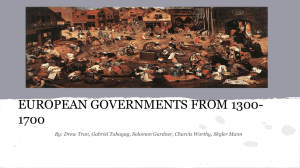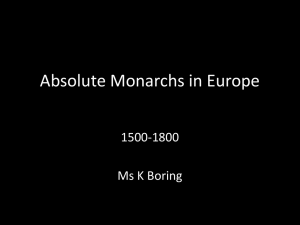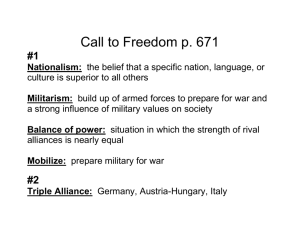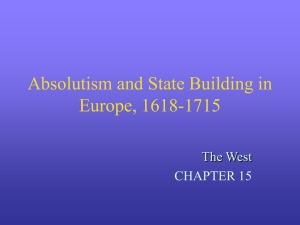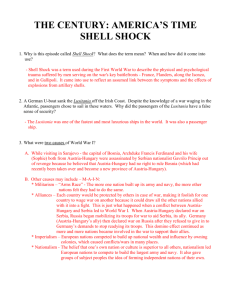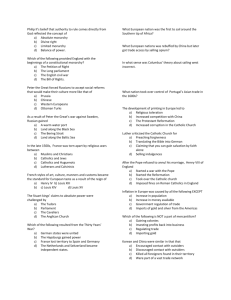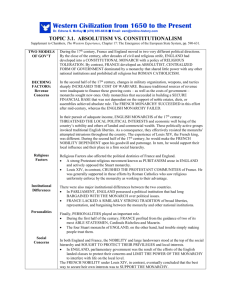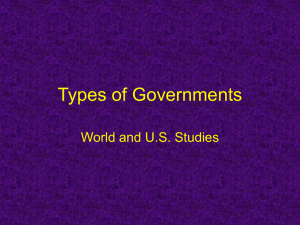Austria-Hungary: A Patchwork Empire 1867
advertisement
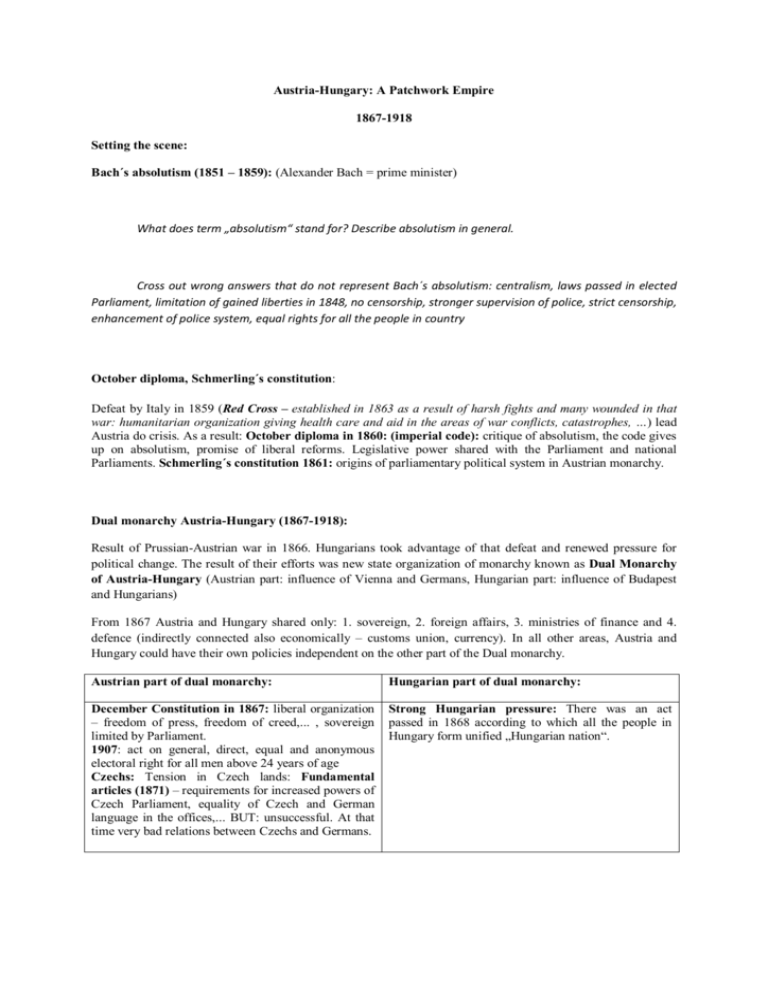
Austria-Hungary: A Patchwork Empire 1867-1918 Setting the scene: Bach´s absolutism (1851 – 1859): (Alexander Bach = prime minister) What does term „absolutism“ stand for? Describe absolutism in general. Cross out wrong answers that do not represent Bach´s absolutism: centralism, laws passed in elected Parliament, limitation of gained liberties in 1848, no censorship, stronger supervision of police, strict censorship, enhancement of police system, equal rights for all the people in country October diploma, Schmerling´s constitution: Defeat by Italy in 1859 (Red Cross – established in 1863 as a result of harsh fights and many wounded in that war: humanitarian organization giving health care and aid in the areas of war conflicts, catastrophes, …) lead Austria do crisis. As a result: October diploma in 1860: (imperial code): critique of absolutism, the code gives up on absolutism, promise of liberal reforms. Legislative power shared with the Parliament and national Parliaments. Schmerling´s constitution 1861: origins of parliamentary political system in Austrian monarchy. Dual monarchy Austria-Hungary (1867-1918): Result of Prussian-Austrian war in 1866. Hungarians took advantage of that defeat and renewed pressure for political change. The result of their efforts was new state organization of monarchy known as Dual Monarchy of Austria-Hungary (Austrian part: influence of Vienna and Germans, Hungarian part: influence of Budapest and Hungarians) From 1867 Austria and Hungary shared only: 1. sovereign, 2. foreign affairs, 3. ministries of finance and 4. defence (indirectly connected also economically – customs union, currency). In all other areas, Austria and Hungary could have their own policies independent on the other part of the Dual monarchy. Austrian part of dual monarchy: Hungarian part of dual monarchy: December Constitution in 1867: liberal organization – freedom of press, freedom of creed,... , sovereign limited by Parliament. 1907: act on general, direct, equal and anonymous electoral right for all men above 24 years of age Czechs: Tension in Czech lands: Fundamental articles (1871) – requirements for increased powers of Czech Parliament, equality of Czech and German language in the offices,... BUT: unsuccessful. At that time very bad relations between Czechs and Germans. Strong Hungarian pressure: There was an act passed in 1868 according to which all the people in Hungary form unified „Hungarian nation“. Austria-Hungary: Union of two separate (only 4 common policies, see above) countries. Inside each country lived many different peoples, or nationalities, each with its own language, own customs and its own way of life. This made the country very hard to govern, especially as many of the peoples wanted to be independent of Austria-Hungary so that they could rule themselves in their own ways. The „patchwork“ of peoples was falling apart. How would you rule the monarchy? Would you support or suppress the varieties of nations, languages, customs, ... ? What is your opinion on unification? Population of Austria-Hungary: 50 million. Empire as a patchwork of different nations, almost half belonged to different Slavic groups. See the map and specify nations living in the empire. Austria-Hungary had no colonies overseas. Nor did Franz Joseph aim to get any. As you have seen, he already ruled an empire of eleven different nationalities, many of them wanting their freedom. To have colonies overseas would complicate this already serious problem. Sovereigh: Franz Joseph I (ruled from 1848 to 1916) : Charles I. (1916-1818) Austria-Hungary: peoples – národy patchwork – zmes, zlátanina crush – zlikvidovat, rozprášit
